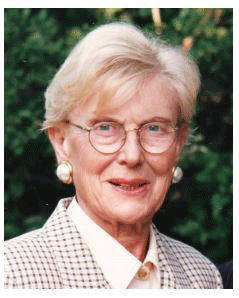Dr Bluma Tischler, 1924–2015

Dr Bluma Tischler (Gorfinkel) was born in 1924 in Baranowicze, Poland. After the Second World War broke out, 17-year-old Bluma fled east into Russia by foot and train. She ended up in Stalinabad (Dushanbe), Tajikistan, where she entered medical school and met her future husband, Isaak, an injured soldier who was recuperating while studying medicine as well. As the war was drawing to a close, they returned to Poland to complete their studies. After the 1946 Kielce pogrom in Poland they fled further west and completed their medical degrees in Munich, Germany, in 1948.
The Tischlers arrived in Montreal in 1950, where Dr Tischler interned at St. Mary’s Hospital and completed her residency in pediatrics at the Montreal Children’s Hospital. In 1955 Dr Tischler moved farther west and took a position at Woodlands School in New Westminster, a residential centre for the mentally and physically handicapped. She helped revolutionize Woodlands, transforming it from a custodial institution into a centre of research, teaching, and compassionate care. She served as medical director of Woodlands from 1973 until its closure in 1989.
Dr Tischler was appointed full clinical professor at UBC in 1983 and clinical professor emeritus in 1989. She was an author on over 35 scientific papers, the majority dealing with metabolic and genetic diseases. Dr Tischler had a special interest in phenylketonuria and was instrumental in instituting the Guthrie test, which is the neonatal screening test for phenylketonuria. She also helped develop a diet to treat newborns diagnosed with phenylketonuria, which allowed patients to develop normally. Later she worked with maternal phenylketonuria patients, reintroducing the phenylketonuria diet during pregnancy.
Dr Tischler’s numerous awards include the Queen Elizabeth II Silver Jubilee Medal (1977) and an American Association on Mental Deficiency Research Award (1978), making her the second Canadian to receive that award in its 102-year history. In 1978 the government of British Columbia recognized Dr Tischler’s achievements when Premier Bill Bennett and Leader of the Opposition Dave Barrett honored her with speeches in the BC Legislature. On that occasion the premier announced the establishment of the Bluma Tischler Postdoctoral Fellowship. In 1992 she was recognized once again when the BC Pediatric Society honored her with a special UBC Clinical Day on Metabolic Diseases. Dr Tischler continued to work at the Metabolic Diseases Clinic at BC Children’s Hospital until her retirement in 1999.
Dr Tischler felt her biggest achievement was her family. She was proud of her two sons, Aron and Fred; her daughters-in-law, Neri and Aimee; and her five grandchildren. In her retirement Dr Tischler enjoyed traveling, community involvement, and a wide range of activities with her friends, but most especially her five beloved grandchildren, all of whom will miss their Bubbie Bluma dearly.
—Aron M. Tischler, MD
North Vancouver
